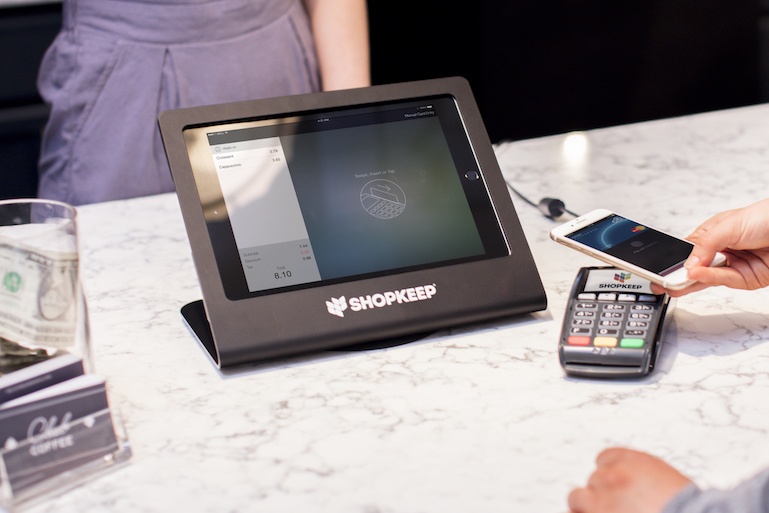
Using Financing to Add Some Size to Your Small Business
It takes money to grow your business. While some entrepreneurs acquire their funding from wealthy great-aunts or by winning the lottery, the majority of small businesses turn to debt financing.
Assuming this is your chosen route, the first step is to identify where the funding will go. Most entrepreneurs have a never-ending list of areas where they’d love to invest in their business. But if growth is your goal, focus on the most promising elements. After all, you don’t want to waste time watering the branches or trunk of your tree when you need to target the roots.
Once you know how you will spend your funds, you can identify the exact amount you’ll need. To give you a general idea of the market, Small Business Administration statistics reveal the median small business loan is $140,000. You’ll also want to consider the timeline for your funds. If you need the money in a hurry, plan on paying a premium price.
If you’ve identified how much money you’ll need and when you’ll need it, you’re now armed with crucial details. This knowledge enables you to strategically search through your loan options to find the perfect match.
SEE ALSO: Need Financing? Check out ShopKeep Capital!
Considering Your Financing Options
There are thousands upon thousands of individual loan products out there. Here are 11 of the most popular categories entrepreneurs choose from:
1. Business Line of Credit
- Amounts up to $500,000
- Funds available within 2 weeks.
2. SBA Loan
- Amounts up to $5,000,000.
- Funds available within 2-3 months.
3. Short Term Loan
- Amounts up to $500,000.
- Funds available in as little as 24 hours.
4. Merchant Cash Advance
- Amounts up to $200,000.
- Funds available in as little as 24 hours.
5. Business Term Loan
- Amounts up to $2,000,000.
- Funds available in 2 or 3 days.
6. Business Credit Card
- Amounts up to $500,000.
- Funds available in 2 weeks.
7. Equipment Financing
- Amounts up to $5,000,000.
- Funds available in as little as 24 hours.
8. Commercial Mortgage
- Amounts up to $5,000,000.
- Funds available in 45 days.
9. Accounts Receivable Financing
- Amounts up to 80% of your receivables.
- Funds available in 3 days.
10. Startup Loan
- Amounts up to $750,000.
- Funds available in 3 weeks.
11. Business Acquisition Loan
- Amounts up to $5,000,000.
- Funds available in 1 month.
Comparing Your Financing Options
After you’ve had a chance to identify a few top contenders, you’ll want to compare the costs to see which loan products are best suited for your unique needs. There are four common pricing methods you can use to see how costly a loan would be for your business.
- Total Cost of Capital (TCC): This metric accounts for the interest, fees on loans that don’t charge interest, and ancillary fees.
- Annual Percentage Rate (APR): True to its name, this metric identifies how much your financing would cost each year.
- Average Monthly Payment: Figuring out how much you’d need to pay each month helps you see exactly what you can afford.
- Cents on the Dollar: By boiling down the numbers to their essence, this metric helps you see how much you’d owe in interest and fees for each borrowed dollar.
Even with these helpful metrics, it can be challenging to compare one loan to another because lenders handle disclosures so differently. To help remedy this issue, the Innovative Lending Platform Association partnered with various lending platforms to make a comparison tool called SMART Box™ (Straightforward Metrics Around Rate and Total cost). This resource promotes more transparency in disclosure standards and gives you a way to calculate the price.
“Access to capital is a top priority for NSBA and we appreciate how SMART Box allows small businesses to more fully assess and compare lending options,” explains Todd McCracken, president and CEO of the National Small Business Association. “This type of price transparency, along with best practices like the ones adopted by the Coalition for Responsible Business Finance (CRBF), will help solidify the trust between non-bank lenders and small businesses.”
Applying for Financing Options
This is where the rubber meets the road. After all, anyone can choose an option. But getting it is the real accomplishment. You’ll greatly improve your chances for success if you take time to prepare adequately before filling out any applications.
Each application has its own requirements, but for reference, here are some of the documents you can expect to be required for a bank loan:
- A business plan that includes balance sheets, profit and loss, and proof of cash flow from your business.
- Personal information such as education history, previous addresses, names you have used, and criminal record.
- Your resume.
- Credit reports from each of the major consumer credit reporting agencies.
- Personal and business tax returns for the past 3 years.
- Signed personal financial statements.
- Projected financial statements.
- Personal and business bank statements from the past year.
- The value of personal or business property you could use as collateral.
- Business licenses and registrations.
- Any franchise agreements, commercial leases, articles of incorporation, or copies of contracts you have with third parties.
Acquiring Your Loan Option
Lenders will pay close attention to your credit as they decide whether or not to approve your request. If you get turned down, don’t take it personally. The majority of loans actually get denied, so you’ll most likely experience it at some point in your career.
The important thing is to learn from each application and try to improve your stock. Any effort you can make to improve your credit scores will be beneficial. Not only will it help you get approved for more loans, but it can also help you score better terms and rates, which saves you substantial money over the life of a loan.
One of the easiest ways to help your scores is to monitor your credit proactively. Errors are common with the major bureaus, so don’t miss the opportunity to set things right. Doing so will improve your credit and help you stand out to lenders.
If you feel that you need a little extra help, you may want to turn to a credit repair expert. They’re trained to find the best ways to improve your scores with both short- and long-term strategies.
Want to try ShopKeep for yourself?
Just answer a few easy questions.
Need help finding the right point of sale?
Just complete the form. We’ll call you right back to explain how ShopKeep can work for you.
Hit the ground running.Sprinting, in fact!
Read our free, comprehensive guide, Small Business 101, to learn all you need to know about starting a thriving business.


